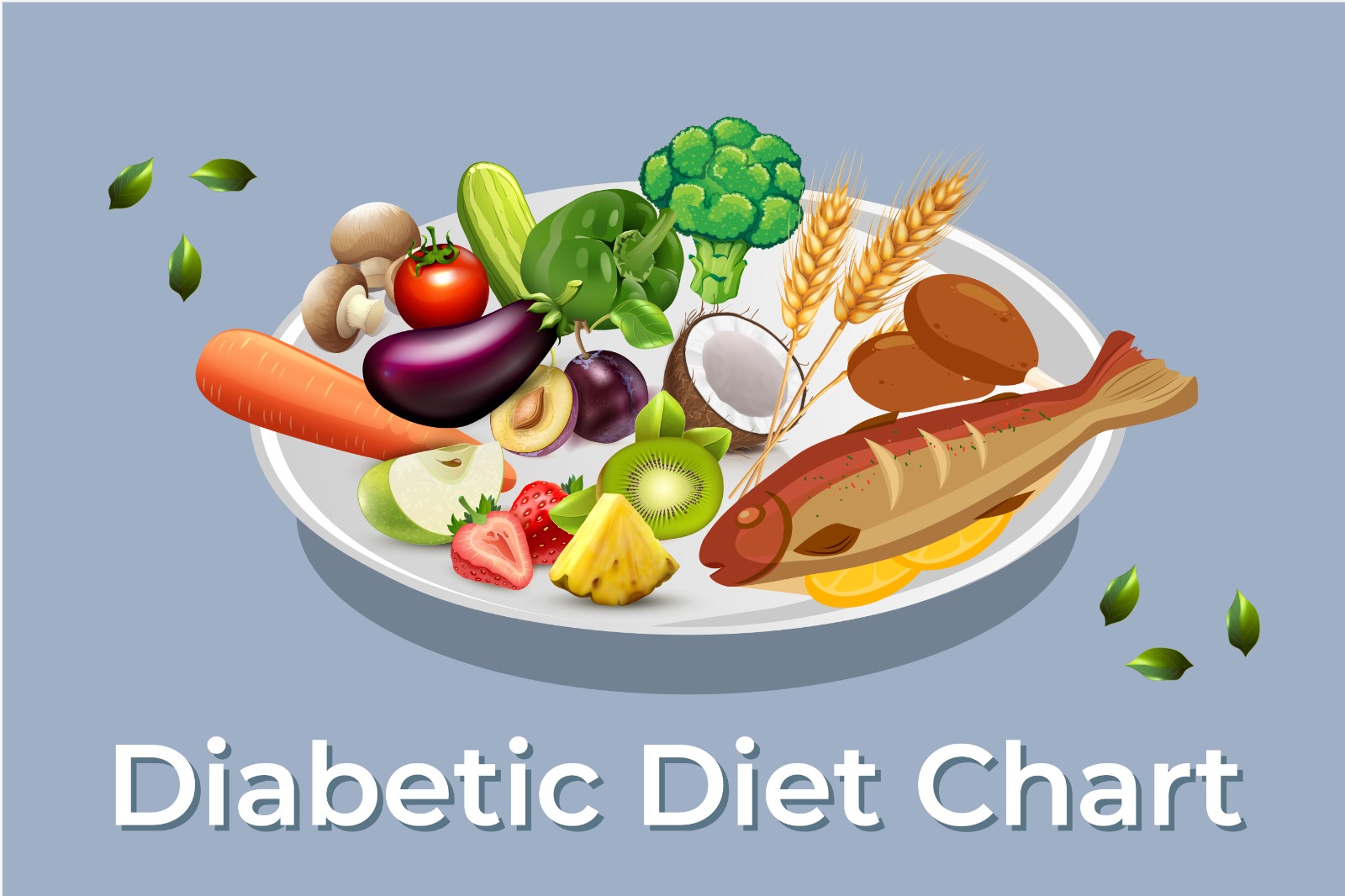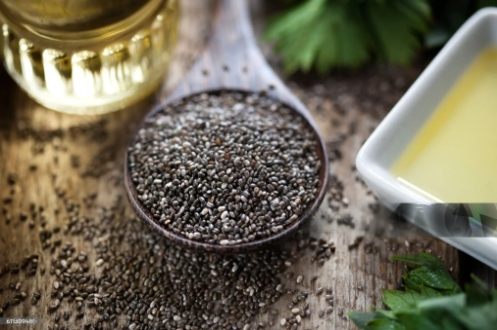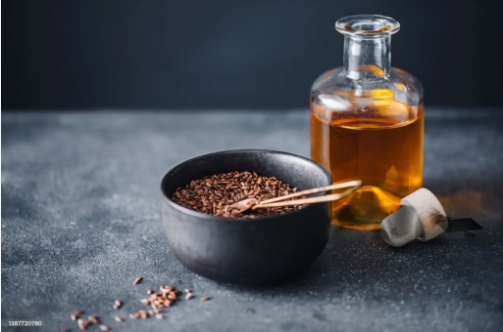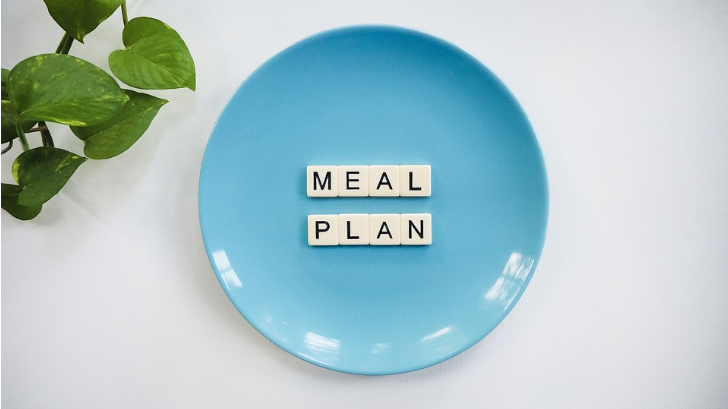6 best yoga asana for diabetes Yoga can help control diabetes. Here are some yoga asanas that can be helpful in controlling diabetes: 1. Vrikshasana (yoga asana for diabetes) Vrikshasana is a famous yoga asana for diabetes which is done keeping in mind the shape of a tree. This asana helps in increasing stability, timing and focus.Vrikshasana is derived from the Hindi word “vriksha”, which means “stem” or “tree”. In this asana, one foot is placed on top of the other, as if the roots of a tree are placed on boots. The benefits Benefits of Vrikshasana are physical, mental and spiritual. It improves stability and balance, strengthens leg muscles, and helps reduce mental stress. Apart from this, Vrikshasana also increases thoughtfulness and meditation. To do this one needs to be steady and also concentrate.To do Vrikshasana, a person has to stand in a position similar to a nearby tree. Then one has to lift one leg and place it on top of the other leg, and then concentrate on keeping the hair balanced. This yoga asana for diabetes is generally done equal time on both sides. 2. Trikonasana Trikonasana is a famous yoga asana yoga for diabetes which is done keeping the shape of a triangle in mind. This asana benefits the entire body, especially helps in strengthening the muscles of the stomach, waist, back, and legs. The benefits Benefits of Trikonasana are physical, mental, and spiritual. It improves digestion, strengthens waist muscles, and enhances balance. Apart from this, Trikonasana also enhances thoughtfulness and meditation. To perform Trikonasana, one has to stand in the position of three adjacent angles. Then, one leg is kept straight outside, and the other leg is placed near the waist. Then, the hands are extended towards the sky and bent towards the three angles, and attention is to be maintained. 3. Bhujangasana Bhujangasana is a famous yoga asana for diabetes which is done keeping in mind the shape of a snake. This asana helps in strengthening the muscles of the stomach, waist, back, and arms. The benefits Benefits of Bhujangasana are physical, mental, and spiritual. It improves the stomach, strengthens the waist muscles, and improves the respiratory system. Apart from this, Bhujangasana helps in reducing mental stress as well as enhances meditation. To perform Bhujangasana, one has to lie down in a flat and supine position. Then, keeping the hands parallel to the body, it has to be lifted upwards, so that its spine remains straight. While maintaining meditation, he has to maintain balanced breathing. 4. Paschimottanasana Paschimottanasana is a famous yoga asana for diabetes that stretches and tightens every last muscle of the entire body. By doing this asana, the muscles of the back, waist, stomach and legs get strengthened. This asana helps in maintaining physical and mental balance and reduces stress. The benefits Benefits of Paschimottanasana include reducing belly fat, improving digestion, controlling blood pressure and calming the mind. This asana also increases thoughtfulness and meditation. To perform Paschimottanasana, one has to sit with the legs straight and then while keeping the breathing balanced, bend the body forward, and extend the hands towards the legs. While maintaining attention, the body has to be brought down as much as possible. 5. Ardha Chakrasana Ardha Chakrasana is a famous yoga asana for diabetes which is done keeping in mind the shape of the chakra. The name of this asana is “Ardha Chakrasana”, because it is half of Chakrasana. This asana helps in strengthening the muscles of the back, waist, stomach and legs. The benefits Benefits of Ardha Chakrasana include reducing belly fat, improving digestion, controlling blood pressure and calming the mind. This asana also increases thoughtfulness and meditation. To perform Ardha Chakrasana, one has to stand straight and then raise the hands straight upwards, so that the spine bends upwards. Then, while maintaining attention, the body has to be smoothly straightened. 6. Vajrasana Vajrasana is a famous yoga asana for diabetes which is done keeping in mind the shape of Vajra. This asana strengthens the muscles of the stomach, waist, legs and knees. The benefits Benefits of Vajrasana include improving digestion, reducing indigestion, eliminating gas problems and increasing blood circulation. Apart from this, it also enhances meditation and peace. To perform Vajrasana, one has to sit on one’s knees, and then bend one’s stomach forward, thereby forming Vajrasana. This asana is suitable for maintaining a straight back. Practicing Vajrasana regularly can control stomach related problems and helps in keeping the body balanced and strong.
Tag: health
Diabetic diet chart
What is diabetes? & what is Diabetic diet Diabetes is a condition that happens when your blood sugar level is too high, which is the main source of energy for your body. Your body makes glucose, but you also get enough of it from the food you eat. A hormone called insulin is made in the pancreas that helps glucose get into your cells and be used for energy. People with diabetes have blood that doesn’t make enough insulin or does not use that insulin properly. Why planning diabetic diet chart should be done? Meal planning with Diabetic diet is essential, as it’ll help you have better control over your health by keeping track of your blood sugar levels, ensuring a balance of nutrients, managing your portions, maintaining consistency with your meals, and planning meals around your medication. By meal planning, you become aware of the food you consume and how it affects your body in the long term. It is also a good wait for you to know the protein, carbohydrate and fibre content your food. 7 Day Diabetic diet plan Let’s learn the best kinds of meals for your diabetic health. Day-1 Breakfast Scrambled eggs (Start your day with a high protein breakfast; it will keep you full for a longer period of time). Lunch Paneer bhurji with multigrain roti and salad (paneer is not only high in protein but also has a low GI. The salad has a good amount of fiber which helps with blood sugar and weight management). Snacks Roaster makhane (They have a good quantity of magnesium and also have low GI). Dinner Dhokla (it is made with besan and it is low in GI, meaning it doesn’t spike your blood sugar levels). Day-2 Breakfast Besan chilla and salad (Besan is low in GI, meaning it doesn’t spike your blood sugar levels). Lunch Soya chunk sabzi with multigrain roti and salad (soya chunks have a high protein and fiber content. It is also rich in iron and boosts blood circulation. Has high levels of calcium and zinc, which benefit bone health). Snacks Sprout salad (they have more protein and less fat). Dinner Vegetable quinoa (the dietary fiber in quinoa is higher than any other grain, it also has a good amount of protein. Due to this digesting it is a slow process). Day-3 Breakfast Sprout chat (they have more protein and less fat). Lunch Brown rice and mix dal with salad (salads have a good amount of fiber in them where as dal is rich in protein. Brown rice gives fewer spikes in blood sugar level). Snacks Popcorn (it is a good low sugar, low calorie snack option) Dinner Paneer tikka with mint chutney ( Paneer is not only high in protein but also has low GI. ) Day-4 Breakfast Boiled eggs with multigrain toast (Start your day with a high protein breakfast; it will keep you full for a longer period of time) Lunch Rawa idli and sambar (rawa idli, which is made with curd and semolina. Curd helps digesting the food with good bacteria. Semolina i) Snacks Air fried chickpeas (chickpea are low in starch, high fiber and protein, which makes them great for controlling blood good) Dinner Chicken curry with multigrain roti and salas (With protein found in chicken and fiber in salad, it is a great Diabetic diet friendly meal) Day-5 Breakfast Vegetable upma (Made with semolina and vegetables Low GI good choice for breakfast) Lunch Grilled tofu/ paneer and grilled vegetables (Using grilled tofu or Paneer making it a good source of protein) Snacks Bhel puri (it is a good low calorie snack) Dinner Grilled vegetable and egg multigrain wrap (with good amount of fiber and protein it a good choice for people with diabetes) Day-6 Breakfast Overnight Oats with fruits and nuts (with low GI and high fiber content, they regulate blood sugar levels). Lunch Chana saag with multigrain roti or brown rice (with fiber, protein and low GI it’ll keep you fuller for longer period of time) Snacks Yoghurt with berries/ nuts/ seeds (low in carb and high in protein, it is also helpful in digesting food) Dinner Chickpea salad (chickpeas are low in starch, high fiber and protein, which makes them great for controlling blood good) Day-7 Breakfast Oat and egg pancake (oats have low GI and high in fiber content, they regulates blood sugar level. Whereas eggs have protein) Lunch Cream of broccoli soup ( it is low carb which is healthy and carbs while digesting release too much glucose) Snacks Chia seed pudding (chia seeds have low GI and don’t spike the sugar level. They are also loaded with fiber protein and omega-3 fatty acids) Dinner Palak dal and multi grain roti (with fiber, protein and low GI, it’ll keep you fuller for a longer period of time) Written By:- Amisha
Diagnosis of Diabetes: A Comprehensive Guide to Strategies
Treatment and diagnosis of diabetes It has become mandatory to have a diagnosis of diabetes. As it is has become an ongoing medical condition that affects your body’s energy-making process from food. After consuming your food, the body converts carbohydrates into glucose. It acts as fuel for your cells. Finally, with the help of insulin, glucose is transported from your blood streams into cells for energy purposes. In the case of diabetes, the pancreas does not produce enough insulin. It is known as type 1 diabetes. But when the body’s cells don’t respond effectively to insulin, it is type 2 diabetes. Gestational diabetes is a less common type of diabetes and only occurs during pregnancy. When insulin resistance happens, the glucose level in the bloodstream increases. Resulting in high blood sugar. How to get a diagnosis of diabetes 1. Fasting plasma glucose (FPG )test. In order to determine the diagnosis of diabetes, you have to fast overnight, after which your blood sugar levels are tested. If it is between 100-125 mg/dL or higher that would indicates diabetes. 2. Oral glucose tolerance test (OGTT) Mostly after the passing plasma this test is done. It is usually done in the morning. Have your breakfast and after few hours, your blood sugar levels are checked. A blood sugar, sugar of 140-199 mg/dL greater suggests diabetes. 3. Random plasma glucose test: Irrespective of what time you had. The blood sugar level is looked at throughout the day. If your blood sugar level is 199 mg/dL a greater you are considered as diabetic. 4. Haemoglobin A1c test (HbA1c): In this test, the average blood sugar level from past three months is measured. 5.6% or higher indicates diabetes Treatment of blood sugar Regular medical checkups: Keeping an eye on your sugar levels by visiting a healthcare professional is very important. Monitoring and screening help you prevent much larger health concerns caused by diabetes, such as kidney disease, nerve damage, eye problems, and memory problems. Knowledge: Having information and support with the help of the people who have managed their condition. This may also include guidance on meal planning, medication, and other complications that come with diabetes. Medication: Depending on the type, different medications are prescribed. These include insulin injections, metformin, and sulfonylureas. Changes in lifestyle: A workout regime and a healthy diet are essential for managing diabetes. Eat a balanced diet. Including high-fibre, high-protein, and low-GI foods. Excluding sugar or processed foods. Regular physical activities help you lower blood sugar levels and improve insulin sensitivity. Management of weight: Losing weight can improve blood sugar levels in people with type 2 diabetes. Blood pressure and cholesterol: Controlling your cholesterol levels and blood pressure is important, as they can affect your heart. It is one of the concerns associated with diabetes. What to take care of your blood sugar levels at home: There are some things that you can do at home to keep your blood sugar levels in check. Diet plan: Plan a healthy balanced diet that includes foods rich in fibre, whole grains, protein, fruits, and vegetables. Limiting the intake of refined carbohydrates, saturated fats, and sugar. Controlling a portion: Avoid overeating; be careful of your size. Eating smaller, more frequent meals throughout the day can help you stabilise your blood sugar level. Hydration: Drink plenty of water. Keep yourself hydrated, but avoid any sugary drinks like soda or fruit juices. And instead, you can have fruits. Limit alcohol consumption. Always choose to drink alcohol in moderation with food. Alcohol tends to fluctuate the levels of sugar. And it also sometimes interferes with your diabetic medication. Herbal supplement: Cinnamon, fenugreek, ginger, turmeric, curry leaves, etc. are other kinds of herbs that help you control your sugar. It is important to consult a healthcare professional before you choose to start taking new supplements. Sleep: Sleeping from 7 to 8 hours. Each night can also be beneficial for sleep. Can destroy your hormones and lead to higher levels. Workout: Choose a workout regime and do regular physical activities like walking, jogging, cycling, swimming, or yoga. At least for 30 to 60 minutes. Conclusion In order to successfully control diabetes, you have to plan a healthy life. Make healthy choices eating a balanced diet, workout stress management, good sleep and a lot of hydration. Can help control blood sugar and reduce health complication. You can also follow oh natural path with your medication, by using some home remedies. Written By:-Amisha
Weight Gain in Diabetes: Proven methods and Solutions
Weight Gain in Diabetes What is Diabetes? Diabetes is a long-term medical disorder defined by high blood sugar levels (glucose). The hormone insulin, which is produced by the pancreas, aids in controlling the blood sugar level or glucose, which is an essential energy source for the body’s cells. High blood sugar are caused by either insufficient insulin production by the body or ineffective cell response to insulin produced in individuals with diabetes. There are several types of diabetes, with the most common being: Type 1 Diabetes: This types of diabetes develops when the immune system of the body unintentionally attacks and kills the pancreatic cells that produce insulin. The body thus generates very little or no insulin. Type 1 diabetes can strike at any age, although it usually appears in childhood or teenagers. To control their blood sugar levels, people with type 1 diabetes need to take insulin for the rest of their lives. Type 2 Diabetes: Types 2 diabetes is the most common form of diabetes with the majority of cases worldwide. The body either stops producing enough insulin or develops an immunity to it resulting in type 2 diabetes. As a result, there is an accumulation of glucose in the blood. Poor nutrition, physical inactivity, and obesity are among the lifestyle variables that are frequently linked to type 2 diabetes. Although it can appear at any age, adults are more likely to experience it, especially those who are fat or overweight. Gestational Diabetes: When the body cannot make enough insulin to meet its rising demands, gestational diabetes develops during pregnancy. It commonly appears between weeks 24 and 28 of pregnancy and goes away after giving delivery. On the other hand, type 2 diabetes is more likely to strike women who have had gestational diabetes in the future. There are also other less common types of diabetes, such as monogenic diabetes and secondary diabetes, which are brought on by specific medical or genetic disorders. weight gain and diabetes. Generally speaking, calorie-dense meals are necessary for those who wish to gain weight. Instead of keeping calorie intake low and keeping to a firmly diet. Typically, an individual seeking to gain weight must consume more calories than they spend. Although diabetics must also be careful of what they consume since some meals may raise blood sugar levels, which can have negative health effects. If a diabetic is thinking about making big changes to their diet, they need to consult their doctor. Dietitians or taught diabetes educators may recommend dietary changes that cause weight gain without compromising health. The effect of several factors on weight gain in diabetes: Weight gain in diabetes, especially type 2 diabetes, is a common issue because of the combined effect of several factors: Insulin Resistance: When a person has type 2 diabetes, their cells become less sensitive to the actions of insulin, which raises blood insulin levels. Weight gain in diabetes is made easier by a lack of insulin, which increases fat accumulation, particularly around the belly. Metabolic Changes: Diabetes changes the body’s metabolism, causing it to store fat easier and use glucose for energy less often. Weight gain may be common in this metabolic imbalance, particularly if lifestyle and food components are poorly controlled. Medication: As a side effect, several diabetic drugs, including insulin and these medications, can cause weight gain in diabetes. Over time, weight gain in diabetes may result from certain drugs because they can increase hunger, increase fat accumulation, or affect how the body absorbs nutrition. Prevention of Low blood sugar levels: People with diabetes can eat too much in calories or carbs out of fear of experiencing low blood sugar. Although this preventive measure is vital for controlling sugar levels, it may lead to weight gain in diabetes if it is not balanced by suitable nutrition or medication treatments. Inactive Lifestyle: Some people may be prohibited from exercising due to low sugar levels fears, tiredness, or issues connected to their diabetes. Inactivity may increase obesity and cause weight gain, making treating diabetes more difficult. Nutritional Choices: Unhealthy eating practices, such as consuming processed foods high in sugar and fat that are high in calories, may increase diabetes management and lead to weight gain. Lack of insulin can also result in cravings for meals high in sugar and carbohydrates, which can feed the never-ending cycle of unhealthy eating and weight gain in diabetes. Strategies to control weight gain in diabetes. reducing processed foods, sweets, and refined carbs as part of a balanced diet high in fruits, vegetables, lean meats, and whole grains. Including regular exercise in everyday activities can enhance insulin sensitivity, help with weight control, and improve general health. working closely with doctors to change medicines plans as necessary, taking blood sugar levels control and weight loss into account. Regularly checking blood sugar, weight, and other important health data may help to identify trends and make intelligent choices about your course of treatment and way of life. Conclusion: Getting help from medical experts, diabetes educators, or support groups in order to establish and maintain healthy habits for long-term diabetes control and weight control. To put it briefly, controlling your weight gain in diabetes needs to take care of all of your factors, including your diet, level of activity, medicines, and health monitoring. You can control your weight and feel better all-around by eating healthy meals, exercising, taking prescribed medicines as directed, monitoring your condition frequently, and seeking medical attention. In order to maintain your health and feel your best with diabetes, it’s important to keep up with these everyday necessities. Written By:-Pratima
Type 1 diabetes: uncover more about it
About Type 1 diabetes is considered an auto-immune condition. The immune system attacks producing cells in the pancreas, resulting in known production. Although it can develop at any stage, it affects people, especially during childhood or adolescence. With type 1 diabetes, lifelong treatment is required as their bodies produce insulin on their own. Increased thirst, frequent urination, extreme hunger, weight loss, fatigue, and blurred vision are some symptoms that often develop rapidly. This kind of diabetes cannot be prevented or cured, but with proper management, any individual can lead a healthy life, which can reduce the risk of other health complications. Symptoms It is necessary to understand how type 1 diabetes causes treatment and long-term complications in order to detect it. 1. Increased thirst: Needing to drink more water than usual and feeling exceedingly thirsty. Experiencing dry mouth and frequently needing a beverage. 2. Extreme hunger: Feeling the need to eat more, even after knee surgery, and experiencing constant. Despite eating, people with type 1 diabetes always feel unsatisfied and hungry. 3. Fatigue: The feeling of being always tired and lacking energy, even after having ample amounts of rest. The body is able to convert glucose into energy, which makes you feel weak. 4. Frequent urination: Needing to urinate more than usual is a sign that your kidneys are working to remove the excess amount of sugar from your bloodstream. 5. Blurred vision: A blurred vision is also a sign ofa high blood sugar level affecting your eyes fluids and causing a temporary change. With proper management of blood sugar, blurred vision may improve. 6. Mood changes: Feeling mixed emotions like anger, gloom, or going through mood swings without knowing why. Blood sugar fluctuations can have an impact on energy and mood, which might result in worry, impatience, or mood swings. 7. Yeast infections: Growing a yeast infection, like thrush, vaginal yeast infection, or fungal infection. High blood sugar levels create an ideal environment for yeast to thrive. Risk Several risk factors increase the chances of developing type 1 diabetes. 1. Family history: If you have a family member with type 1 diabetes, you are at risk of suffering from the same disease. 2. Genetics: Certain kinds of genes play an important role in increasing the likelihood of type 1 diabetes. Specific gene types related to the immune system increase sensitivity. 3. Autoimmune disease: Suffering from auto-immune diseases like thyroid, Celiac disease, or lupus can also increase the risk of developing type 1 diabetes. 4. Viral infection: During childhood, certain kinds of viral infections might trigger an immune response in the body, leading to type 1 diabetes. 5. Childhood diet: According to some studies, developing type 1 diabetes depends on childhood diet, such as the timing of the introduction of certain foods or breastfeeding, which may influence the risk. 6. Exposure to environmental toxins: Certain environmental toxins and pollutants present in the air, water, soil, or food that can negatively impact human health. These substances may include chemicals like pesticides, heavy metals such as lead and mercury, air pollutants like particulate matter and ozone, as well as industrial by products like polychlorinated biphenyls (PCBs) and dioxins. Exposure to these toxins can disrupt various bodily functions, including the immune system, potentially increasing the risk of developing type 1 diabetes and other health conditions. Natural herbs that help with type 1 diabetes 1. Cinnamon According to some studies Cinnamon helps in lowering the blood sugar level and improves insulin sensitivity 2. Fenugreek: The seeds contain some type of soluble fiber and compound that helps in lowering the blood sugar level and improves insulin sensitivity 3. Bitter melon: It contains a compound that gives insulin like effects helping lower. The blood sugar level studies have shown promising results, but more research is needed to be done. 4. Berberine: It has anti inflammatory properties due to which it helps in diabetes and conditions with inflammation. Conclusion In conclusion Type 1 diabetes is a condition where insulin-producing beta cells are destroyed in the pancreas. It is an auto-immune disease, and it causes insulin deficiency. an imbalance in blood sugar levels. There is no known cause of it, but it is believed a combination of genetics, environmental factors, and immune system imbalance is responsible for its development. If you’re aware of risk factors like your family, history, genetics, autoimmune diseases, viral infection, and childhood diet, it can be timely diagnosed and managed. Despite the difficulties people face with type 1 diabetes, they have happy and productive lives. By receiving the right medication, lifestyle changes, and routine monitoring of sugar levels. Written By:- Amisha
Chia seeds benefit and side effect for females
Understanding chia seeds benefit for females With so many health advantages, we see chia seeds benefit for females in the rapidly changing world of nutrition and health. They have great nutritional value and a wide range of uses, which makes them necessary for daily use. Chia Seeds benefit for Bone Health Chia seeds benefit for females is remarkable it does wonders for women. With time, the bone density of women tends to decrease. These seeds are a rich source of the three required minerals: calcium, magnesium, and phosphorus. That work for bone health in harmony to secure bone structure and prevent the decline of bones. Including them in your diet is another step towards maintaining strong, healthy, and resilient bones. Chia Seeds an ally to heart-healthy Another chia seeds benefit for females is that they support cardiovascular health. Because women are more easily influenced by heart disease, they should consume a high concentration of omega-3. By lowering cholesterol and reducing inflammation, these good fats significantly lessen the likelihood of developing heart-related problems. How Chia Seeds Benefit Reproductive Health They are also great for the reproductive system. The plentiful amount of folate in chia seeds makes them an essential component of the diet given to a mother before birth, aiding in the proper development of the baby. They are also a good source of antioxidants, which help reduce stress, which is beneficial for the foetus. Hormones with Chia Seeds The substance called folate found in Chia seeds is beneficial for mothers before giving birth. It helps in proper development of the baby. The antioxidants a good for reducing the stress creating a stress-free environment for the fetus. Management of weight Chia seeds are high in fibre and also also contain good amount of protein, which can promote a feeling of fullness. With you trying to maintain your current weight over working on weight loss journey, adding them to a daily regime can be helpful. For Skin and Hair Health Women’s skin, and hair health tend to get better with the use of Chia seeds. we know that they are rich and anti-oxidants and omega-3 which nourishes and restore skins youthfulness and gives glowing complexion. Not only that they also nourish hair and prevent dryness and premature graying of hair. Some chia seeds side effects in females Digestive Issues The high fiber content can be helpful for gut health, but there are some chia seed side effects in females that cause issues for some people, like bloating, gas, and diarrhoea. Only when taken in large amounts. It’s important to introduce chia seeds slowly and gradually into your diet. Interactions with Medications Some other chia seeds side effects in females are when used with certain medications, such as blood thinners, diabetes medications, and thyroid medications. High fiber can obstruct the absorption of these medications. Women taking any medications should consult with their healthcare provider before significantly increasing their chia seed intake. Allergic Reactions In limited number of people, allergy reaction is seen. These allergic reaction may cause symptoms like hives, rash, shortness of breath, swelling, and dizziness. With food allergies, be aware before consuming them. Choking Hazard It’s necessary to soak them in water before taking chia seeds or grinding them into a powder. Dry chia seeds can cause choking, especially for young children. Soaking them or grinding them before consumption can lower the danger of choking. Dry chia seed can be hazardous, especially for children. Hormone Interactions The omega-3 fatty acids and antioxidants found in chia seeds may have some good effects on the hormone levels of some people, like PCOS or menopause. But it could also cause chia seeds side effects in females with some endocrine disorders. Consulting a doctor before hand is suggested. Conclusion In conclusion, chia seeds are a powerful superfood. They are beneficial for bone health, heart wellness, fertility, hormonal balance, weight management, and skin and hair care. They offer a broad spectrum of benefits that work with a lot of the unique needs and concerns of women. By including them in your daily meals, you use nature’s medicine to cure your health. But they also have some side effects so remember to use them in a limited quantity or after consulting a health care professional. Written By :-Amisha
Flax seed benefit and side effect on male
The super food Flax seeds are loaded with different supplements and are frequently promoted for their potential medical advantages, especially for men. Here, we will study the flax seed benefits for males and the flax seed side effects for males, guaranteeing you a full understanding of what these seeds can mean for your general prosperity. Flax Seed Benefits for Male 1. Heart heath flax seed benefits for male consolidates their ability to help cardiovascular prosperity. Flax seeds are well off in omega-3 unsaturated fats, expressly alpha-linolenic corrosive (ALA), which has been shown to help with cutting down heartbeat, decrease the gamble of coronary ailment, and further foster cholesterol levels. 2. Prostate Health: One of the huge flax seed benefits for male is their capacity to help prostate prosperity. Flax seeds contain lignans, which are cell support increases that could help with reducing the bet of prostate sickness and innocuous prostatic hyperplasia (BPH), a commonplace condition that impacts more settled men. 3. Fertility and Testosterone: As per some examination flax seed benefits for male incorporate better richness and testosterone levels Flax seeds are a fair wellspring of omega-3 unsaturated fats and lignans, which could help in managing the coordinating compound balance and further foster sperm quality and motility. 4. Diabetes Management: Flax seed benefits for male with diabetes or those at risk for cultivating this condition. The high fiber in flax seeds benefits men by assisting with controlling glucose levels and further develops insulin responsiveness. 5. Weight Management: Adding flax seed benefits for male into your eating regimen can be a useful device for weight the executives. The fiber and protein in flax seeds can advance sensations of completion and satiety, making it simpler to keep a solid weight. Flax Seeds Side Effects for Male Digestive Issues: While there are various benefits, but possible flax seed side effects for male can also be possible. The most common is digestive discomfort, such as bloating, gas and diarrhea, mostly if you take large amounts of flax seeds or introduce them into your diet way too quickly. Interference with Medication: Flax seed side effects for male might incorporate communications with specific medications, like blood thinners, diabetes medications, and chemical treatments. It’s essential to converse with your clinical benefits provider before coordinating flax seeds into your eating routine, particularly if you are taking any specialist-endorsed drugs. Allergic Reactions: Although rare, a few people might encounter flax seeds secondary effects for male as hypersensitive responses, like hives, rashes, or respiratory hardships. Assuming you experience any unfavorable responses subsequent to consuming flax seeds, suspend use and look for clinical consideration. Kidney Stones: oxalate a compound found in flax seed in high quantity,which can add to the development of kidney stones. Men with a foundation set apart by kidney stones or those at risk for making them should be careful about consuming a ton of flax seeds benefits for male Hormone Imbalances: In some cases,the lignans in flax seeds might make a gentle estrogenic difference, which might actually prompt flax seeds secondary effects for male connected with chemical irregular characteristics, like changes in sexual capability or richness. It’s important to take note that the potential secondary effects of flax seeds for men are, for the most part, connected with the unnecessary or delayed utilization of flax seeds. Balance and progressive presentation in your eating routine can assist with limiting the risk of unfavorable impacts. Conclusion In conclusion, flax seed benefits are various and range from being effective on cardiovascular well being and prostate capability to better richness and diabetes the board. Be that as it may, it’s essential to know about the potential flax seeds side effects for male, like stomach related issues, drug connections, and kidney stone development, and to talk with a medical care proficient before fundamentally expanding your flax seed consumption. By understanding both the advantages and expected downsides, you can arrive at an educated conclusion about integrating these flexible seeds into your general well being and health routine. Written By:-Amisha
Healthy food chart: how to choose the right one?
Healthy Food Chart for a Daily Routine with Indian Meals Understanding the fact that healthy food chart for men and woman could be different for their daily use. Male Breakfast – 1 overnight oats with 1/2 cup of mixed berries and 1 tablespoon of honey. – 2 eggs (boiled or scrambled) with 2 slices of whole-grain toast. Or Poha with 2 boiled eggs. Lunch – Rice/roti – 1 cup of cooked dal (lentils). – 1 cup of mixed vegetable curry / Salad/ sprouts. – Grilled chicken or fish (any kind or protein). Snack – Low-fat Greek yogurt with of mixed nuts/ roasted fox nut. – Or any kind of fruits. Dinner – Whole-wheat chapati or roti besan ka chilla. – 1 cup of sautéed mixed vegetables (such as broccoli, bell peppers, and zucchini). – 1 cup of grilled salmon or tofu (or any sort of protein). Hydration – Drink at least 8 cups of water throughout the day. Female Breakfast – Oatmeal or overnight oats with mixed berries and honey. You can also use seeds and nuts. – 1 boiled egg with 1 slice of whole-grain toast. Or -Besan chilla with paneer burji and a salad. Lunch – 3/4 cup of steamed basmati rice. – 3/4 cup of cooked dal (lentils). – 3/4 cup of mixed vegetable curry (such as cauliflower, spinach, and carrots). – 1/2 cup of grilled chicken or fish. Snack – 1/2 cup of low-fat Greek yogurt with 2 tablespoons of mixed nuts. – 1 medium-sized banana. Dinner – 1 whole-wheat chapati or roti. – 3/4 cup of sautéed mixed vegetables (such as broccoli, bell peppers, and zucchini). – 3/4 cup of grilled tofu or paneer (or any sort of protein). Hydration – Drink at least 6 cups of water throughout the day. Understanding necessities of healthy food chart Eating a healthy food and a balanced diet is essential for maintaining energy levels, preventing disease, and general well-being. For both men and women, the following healthy eating chart suggests a daily schedule that includes Indian meals to guarantee that vital nutrients are taken in the right amounts. The guidelines for men and women range significantly since each gender has different caloric and nutritional demands. Women often have lower calorie and nutritional requirements, whereas males typically need more to maintain their bigger bodies and higher metabolisms. Muesli is a complex carbohydrate that is high in fiber and gives you energy all day long. It is a breakfast option for both men and women. High-quality protein is provided by the eggs, while natural sweetness and antioxidants are added by the berries and honey. Lunch consists of a combination of lean protein (fish or chicken for males, or tofu/paneer for women), whole grains (like basmati rice), legumes (like dal), and a variety of vegetables. This well-rounded strategy guarantees that complex carbs, fiber, protein, and vital vitamins and minerals are consumed. Fresh fruit and Greek yogurt with almonds are two examples of healthy and filling snacks that can help you avoid overindulging during the next meal and keep your energy levels stable in between meals. Dinner options consist of a selection of sautéed veggies, whole-grain chapati or roti, and a protein source (grilled salmon or tofu/paneer). This meal plan encourages consumption of fiber, vital micro-nutrients, and macro-nutrients in a healthy and balanced manner. Maintaining optimal body functioning throughout the day requires staying hydrated, and the recommended water consumption for men and women differs based on gender. For men, it is 8 cups, while for women it is 6 cups. Conclusion In conclusion, the healthy food chart that is offered provides a basis for a wholesome and well-balanced daily schedule that includes Indian meals and addresses the specific requirements of both genders. You may maintain a healthy weight, lower your risk of chronic illnesses, and improve your general health by implementing these suggestions into your everyday routine. It’s crucial to remember that these are only suggestions; depending on personal circumstances like age, degree of exercise, and any dietary requirements or limitations, this healthy food chart could need to be modified. A customized nutrition plan that supports your unique health and wellness objectives can be developed with the assistance of a certified dietitian or other healthcare expert. Written By:- Amisha
5 health benefit of omega-3 on health
Omega-3 Fatty Acids It is one kind of polyunsaturated fat that is essential to preserving our general health and well being is omega-3 fatty acids. The reason certain nutrients are referred to be “essential” is that our bodies are unable to generate them naturally; instead, we must get them from our food or supplements. The advantages , the appropriate consumption, and the finest dietary sources to guarantee you are receiving enough of these vital nutrients are all covered in this article. The Benefits of Omega-3 Fatty Acids Omega-3 fatty acids have a wide range of health benefits that have been extensively studied and documented. Here are some of the key benefits: Heart Health Omega-3 fatty acids have been shown to have a positive impact on heart health. They can help lower triglyceride levels, reduce inflammation, and improve the function of the endothelium, which is the lining of the blood vessels. This can lead to a reduced risk of heart disease, stroke, and heart attack. Brain Health The growth and function of the brain depend on omega-3 fatty acids. They may help treat depression and other mental health issues, in addition to being crucial for preserving cognitive function and lowering the risk of dementia and Alzheimer’s disease. Inflammation Reduction They have potent anti-inflammatory properties, which can help reduce the risk of chronic diseases such as arthritis, autoimmune disorders, and certain types of cancer. Eye Health They are essential for the health of the eyes, and they may help reduce the risk of age-related macular degeneration, the leading cause of vision loss in older adults. Pregnancy and Child Development Omega-3 fatty acids are crucial for fetal development and growth, and they may also help reduce the risk of preterm birth and support the cognitive and visual development of infants and children. Recommended Intake and Food Sources The recommended intake of omega-3 fatty acids varies depending on age, gender, and health status. The general recommendation for adults is to consume between 1.1 and 1.6 grams of omega-3 fatty acids per day, with a focus on EPA (eicosapentaenoic acid) and DHA (docosahexaenoic acid). The best food sources of omega-3 fatty acids include: There are different ways of getting that omega 3 from your food. Some veg sources and some non-veg Fatty Fish Fatty fish, such as salmon, mackerel, sardines, and tuna, are some of the best sources of omega-3 fatty acids. Consuming these fish two to three times a week can help you meet your recommended intake. Nuts and Seeds Walnuts, flax seeds, chia seeds, and hemp seeds are all good sources of omega-3 fatty acids, particularly the ALA (alpha-linolenic acid) form. Plant Oils Certain plant-based oils, such as flax seed oil, canola oil, and walnut oil, are also rich in omega-3 fatty acids. The Importance of Omega-3 Fatty Acids They are essential for maintaining overall health and well-being, and their importance cannot be overstated. From heart health to brain function, inflammation reduction, and eye health, these nutrients play a vital role in our bodies. Given the numerous health benefits, it is important to ensure that you are getting enough of these nutrients in your diet. If you are unable to meet your recommended intake through diet alone, supplementation may be necessary. However, it is always best to consult with a healthcare professional before starting any new supplement regimen. Conclusion One doesn’t need to emphasize enough the importance this fatty acid as a constituent of a nutritious diet. Knowing the advantages of these vital nutrients, together with the ideal sources in your diet and suggested consumption, can help you make sure you are consuming enough omega-3 fatty acids to maintain your overall well-being and health. Written By:- Amisha
Keto Diet: A Comprehensive Guide
What is the Keto Diet? The ketogenic diet, is a high-fat, low-carbohydrate dietary approach that has gained significant popularity in recent years. It aims to put the body into a metabolic state called ketosis, where the body begins to burn fat for fuel instead of carbohydrates. In a traditional diet, the body primarily uses glucose, derived from carbohydrates, as its main source of energy. This diet, on the other hand, drastically reduces carbohydrate intake, typically to less than 50 grams per day, forcing the body to transition to an alternative fuel source – ketones. Ketones are produced when the body breaks down fat for energy, and they can be used by the brain and other organs as a source of fuel. This metabolic shift can have various health benefits, including weight loss, improved insulin sensitivity, and reduced inflammation. Benefits of the Keto Diet 1. Weight Loss: The diet is known for its ability to promote weight loss. By restricting carbohydrates and increasing fat intake, the body enters a state of ketosis, which can lead to a higher rate of fat burning and reduced appetite. 2. Improved Insulin Sensitivity: This diet has been shown to improve insulin sensitivity, which is crucial for managing blood sugar levels and reducing the risk of type 2 diabetes. 3.Reduced Inflammation: The high-fat, low-carb nature of the diet can help decrease inflammation in the body, which is linked to various health conditions, such as heart disease, cancer, and Alzheimer’s disease. 4.Improved Brain Function: Ketones can provide an alternative fuel source for the brain, which may lead to improved cognitive function, focus, and mental clarity. 5. Epilepsy Management: This diet has been used successfully to manage epilepsy, particularly in children, by reducing the frequency and severity of seizures. What to Do on the Keto Diet Focus on High-Fat Foods: This diet emphasizes consuming high-fat foods, such as avocados, nuts, seeds, olive oil, and fatty cuts of meat. Limit Carbohydrate Intake: To achieve and maintain ketosis, it’s essential to limit carbohydrate intake to less than 50 grams per day. This means focusing on low-carb vegetables, berries, and other non-starchy foods. Increase Protein Intake: While the diet is high in fat, it’s also important to consume an adequate amount of protein to support muscle mass and overall health. Stay Hydrated: Drinking plenty of water is crucial while following this diet, as the body may lose more fluid and electrolytes during the initial stages of the diet. Monitor Ketone Levels: To ensure that you’re in a state of ketosis, you can use urine, blood, or breath tests to monitor your ketone levels. What to Avoid on the Keto Diet High-Carb Foods: Steer clear of high-carb foods, such as bread, pasta, rice, potatoes, and sugary treats, as these can disrupt ketosis. Processed Foods: Avoid processed and packaged foods, as they often contain hidden carbohydrates and preservatives that can hinder your progress on the diet. Alcohol: Alcohol can be high in carbohydrates and may slow down the process of achieving and maintaining ketosis. Legumes: While some legumes, such as chickpeas and lentils, can be included in moderation, they are generally higher in carbohydrates and should be limited. Certain Vegetables: Some vegetables, such as carrots, beets, and corn, are higher in carbohydrates and should be consumed in moderation while following this diet. Conclusion This diet is a powerful dietary approach that can provide a range of health benefits, from weight loss to improved brain function. By understanding the principles and following the recommended guidelines, individuals can potentially experience transformation results. However, it’s important to remember that it may not be suitable for everyone, and it’s always best to consult with a healthcare professional before starting any new dietary regime. With the right approach and commitment, it can be a highly effective tool in achieving one’s health and wellness goals.Remember, this diet is a highly individualized approach, and it’s important to consult with a healthcare professional before starting any new diet or making significant changes to your eating habits. Written By:- Amisha











